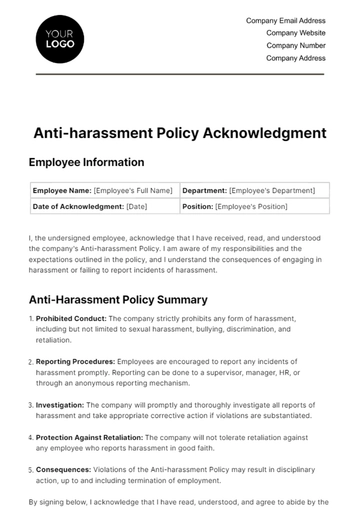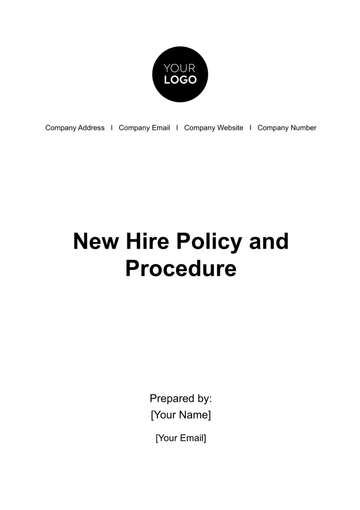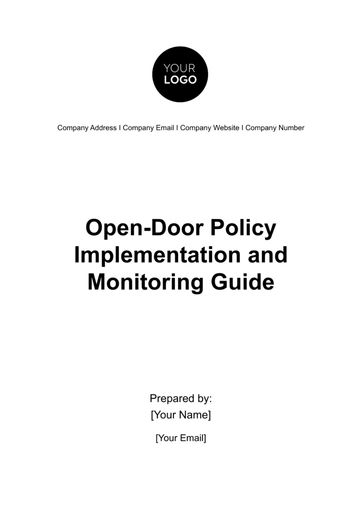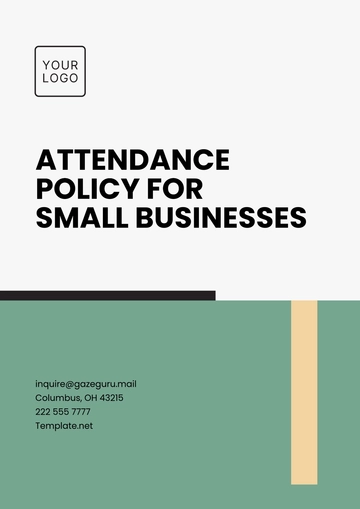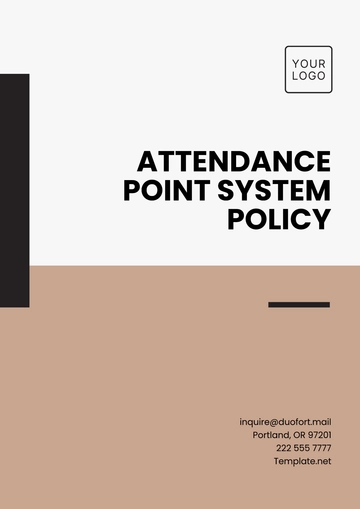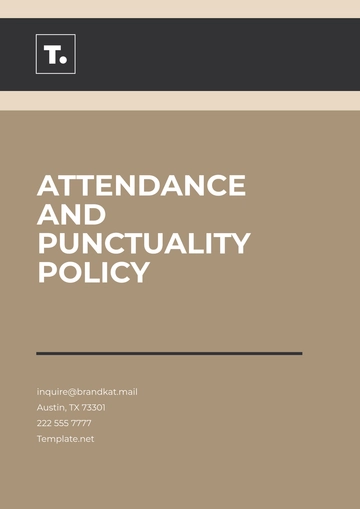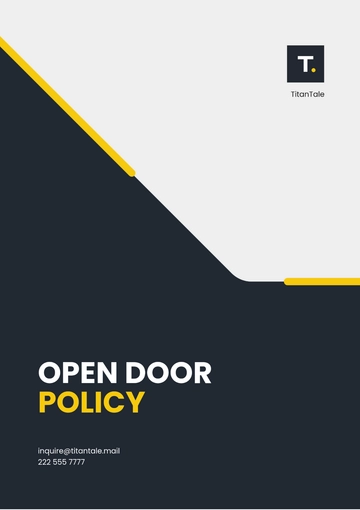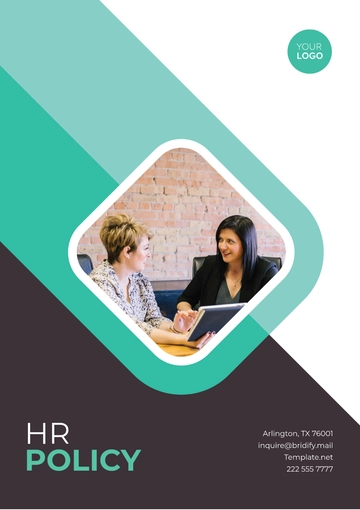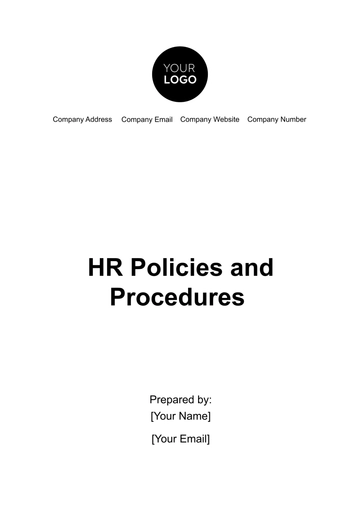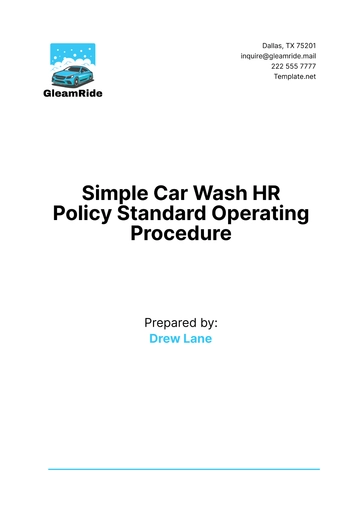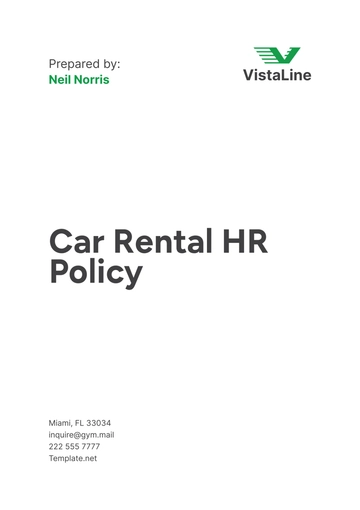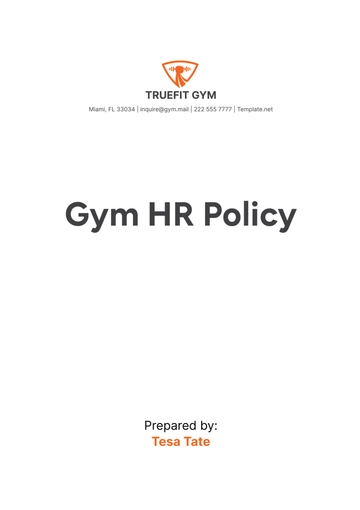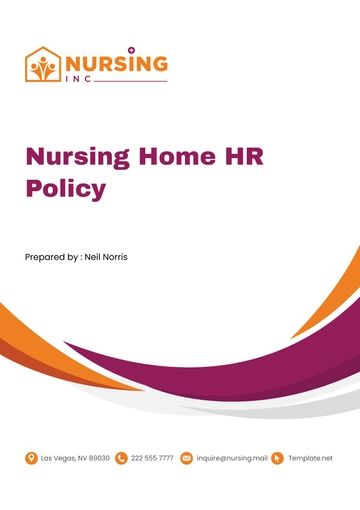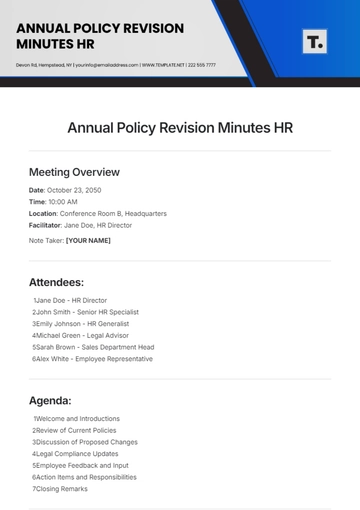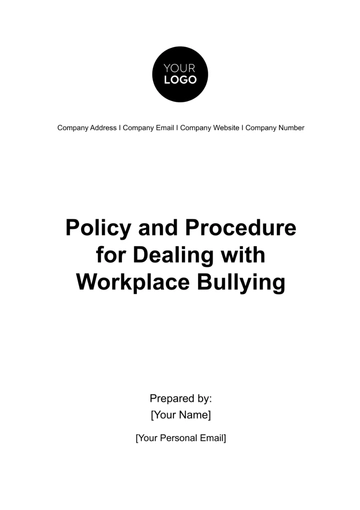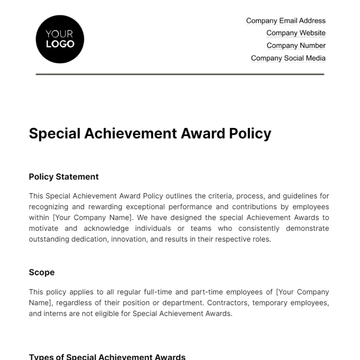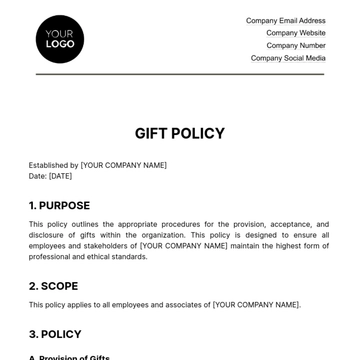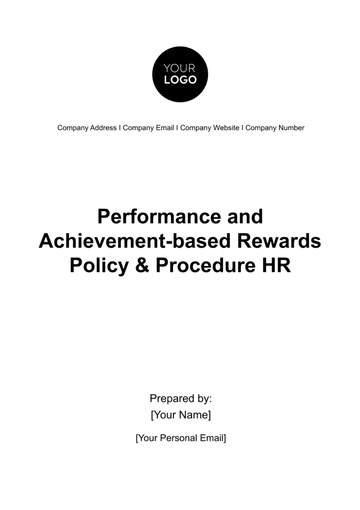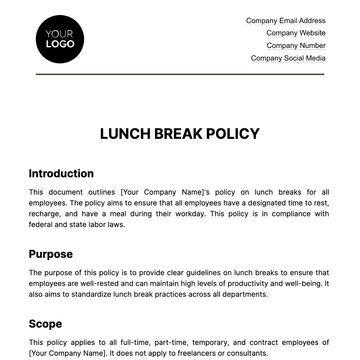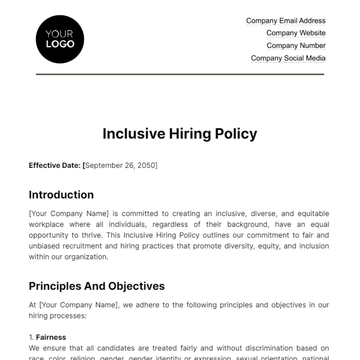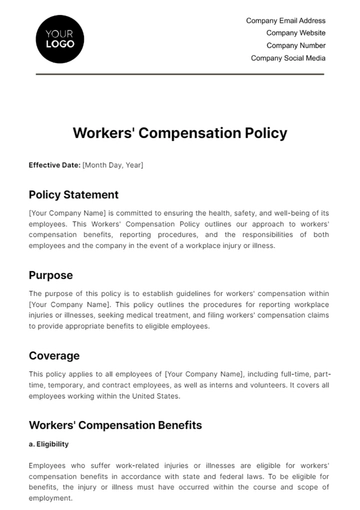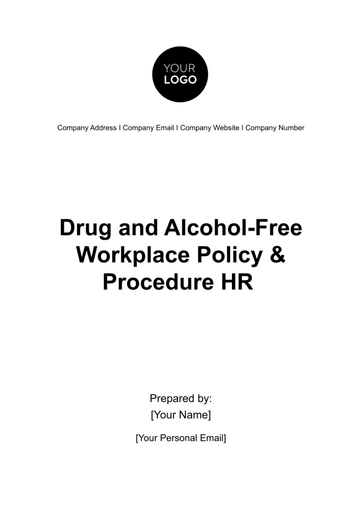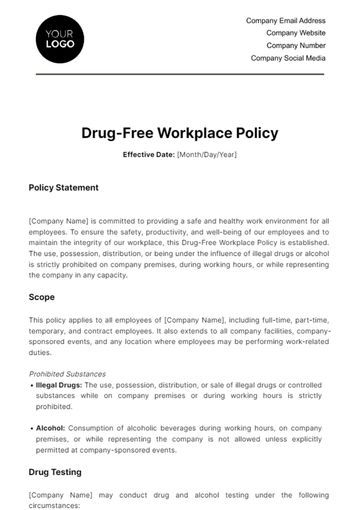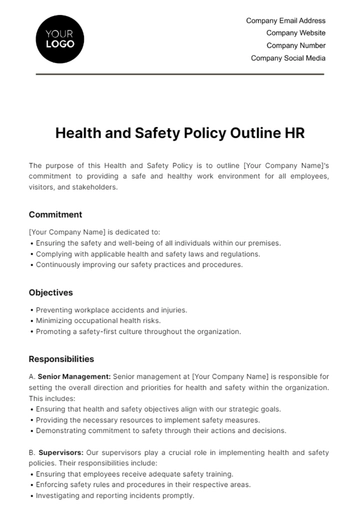Free Guide to Implementing HR Policies and Procedures
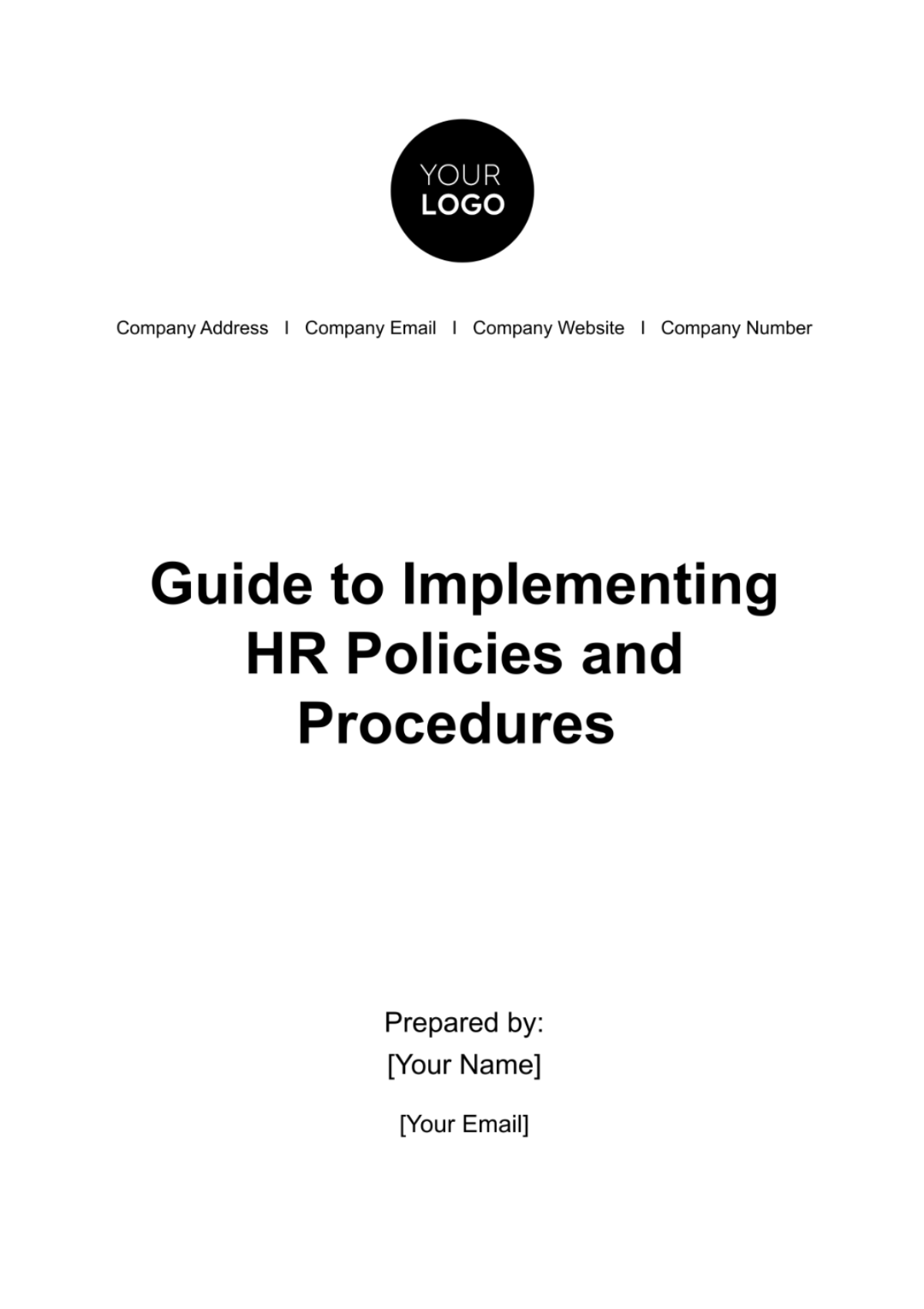
TABLE OF CONTENTS
Introduction.....................................................................................................................2
Importance of Structured HR Implementation.............................................................3
The Scope of This Guide................................................................................................3
Strategy for Policy Development..................................................................................3
Needs Assessment.........................................................................................................3
Collaborative Drafting....................................................................................................3
Pilot Testing and Rollout Strategy.................................................................................4
Communication and Training.........................................................................................4
Strategic Communication...............................................................................................5
Comprehensive Training................................................................................................5
Monitoring and Enforcement.........................................................................................5
Proactive Monitoring......................................................................................................6
Constructive Enforcement.............................................................................................6
Regular Review and Updates.........................................................................................6
The Imperative of Continuous Review..........................................................................7
Scheduled Policy Audits.................................................................................................7
Feedback Collection.......................................................................................................7
Update Implementation..................................................................................................7
Documentation and Archiving.......................................................................................8
Addressing Concerns and Feedback............................................................................8
Importance of Feedback in Policy Refinement............................................................9
Mechanisms for Collecting Feedback...........................................................................9
Addressing and Implementing Feedback.....................................................................9
Ensuring Transparency in Feedback Resolution........................................................10
Conclusion.....................................................................................................................10
Introduction
Navigating the dynamic corporate world requires a robust foundation built on structured HR policies and procedures. As [Your Company Name] stands at the precipice of this exciting era, this guide is tailored to be the compass guiding our journey.
Importance of Structured HR Implementation
Our human resources are our most invaluable asset. The manner in which we draft, communicate, and enforce HR policies reflects our commitment to nurturing this asset. A structured approach ensures consistency, transparency, and fairness, reinforcing the trust our employees place in us.
The Scope of This Guide
This guide is comprehensive, covering the lifecycle of HR policy development—from its conceptual stage to monitoring and refinement. Whether you are a seasoned HR professional or a department lead, the insights provided here aim to empower every stakeholder in [Your Company Name] to contribute to a cohesive work environment.
Strategy for Policy Development
To architect effective and comprehensive HR policies, a strategic approach is imperative. Our policy development framework marries best practices with innovative thinking, guaranteeing we stay ahead of the curve while addressing the unique needs of our workforce.
Needs Assessment
Employee Feedback Channels: Harness feedback from employees through anonymous digital surveys, feedback boxes, and open-door sessions.
External Benchmarking: Regularly analyze industry standards and practices to ensure our policies are competitive and contemporary.
Focus Group Discussions: Organize in-depth conversations with employees across levels and departments to identify nuanced requirements and potential policy gaps.
Collaborative Drafting
Cross-Functional Committees: Assemble representatives from diverse departments, ensuring the policy framework is inclusive and considers the varied dynamics of different teams.
Legal and Ethical Compliance: Collaborate with legal teams and ethicists to ensure that drafted policies are compliant with prevailing laws and uphold the highest moral standards.
Feedback Iterations: Once a draft is ready, circulate it amongst key stakeholders for feedback, refining the policies based on this iterative input.
Pilot Testing and Rollout Strategy
Phase-Wise Implementation: Instead of a company-wide immediate rollout, introduce new policies in phases, prioritizing departments or teams where they're most relevant.
Measure Impact and Refinement: Utilize the feedback and data from the initial rollout phase to finetune the policy. Address unforeseen challenges before a full-scale implementation.
Continual Feedback Mechanism: Even after rollout, maintain an open channel for feedback, ensuring that the policy remains agile and responsive to evolving needs.
Policy Development Milestones for 2053:
Milestone | Date of Completion |
Needs Assessment Completed | April 2053 |
Company-wide Implementation | October 205 |
Communication and Training
Efficiently communicating and training employees on new policies is vital to ensure smooth implementation and adherence. We prioritize clear communication channels and comprehensive training methods to facilitate understanding and application of our policies.
Strategic Communication
Multi-Channel Announcements: Utilize a combination of emails, intranet bulletins, mobile app notifications, and physical posters to announce any new or updated policies, ensuring no employee is left uninformed.
Dedicated Policy Portal: Maintain an intranet portal where all policies are stored, frequently updated, and categorized for easy access. Each policy should be accompanied by a concise summary for quick reference.
Comprehensive Training
Customized Training Modules: Develop e-learning modules tailored for different departments, ensuring the training is relevant and relatable. Use a mix of videos, quizzes, and interactive content for engagement.
Peer-to-Peer Training Sessions: Encourage employees who are well-versed in particular policies to guide their peers. This not only enhances understanding but also fosters a collaborative work environment.
Communication and Training Metrics for 2053:
Policy Introduced | Employees Trained (%) | Training Score (out of 100) |
Flexible Work Hours | 97% | 92 |
Mental Well-being Initiatives | 99% | 95 |
Advanced Tech Usage Protocol | 90% | 89 |
Monitoring and Enforcement
At [Your Company Name], we understand that drafting and communicating policies are only the initial steps. Ensuring these policies are consistently followed requires diligent monitoring and, when necessary, decisive enforcement. Our approach is designed to be constructive, fostering adherence without compromising the trust or morale of our employees.
Proactive Monitoring
Method | Description |
Digital Monitoring Tools | Utilize advanced HR software that can automatically track and report deviations from certain policies, such as attendance, and usage of company resources. |
Regular Check-ins | Department heads and team leads should conduct periodic check-ins, ensuring policy adherence and addressing any concerns employees might have. |
Anonymous Reporting | Provide employees with a platform to anonymously report observed breaches of policies, ensuring a safer environment and empowering every individual. |
Constructive Enforcement
Method | Description |
Graded Response | Not every policy breach warrants severe action. Implement a graded response system, starting with gentle reminders and escalating it as needed. |
Restorative Conversations | Before taking any punitive measures, initiate dialogues with involved parties to understand the reasons behind policy breaches. Often, a conversation can clarify misunderstandings and lead to a resolution. |
Documentation and Transparency | Every step taken in the enforcement process, from initial observations to any actions taken, should be well-documented and shared with the concerned individuals to ensure transparency and trust. |
Regular Review and Updates
Stagnation is the antithesis of innovation. In the rapidly evolving corporate landscape of the 2050s, our HR policies cannot afford to be static. At [Your Company Name], we've instituted a systematic approach for periodic reviews, ensuring that our policies remain relevant, efficient, and aligned with our core values and objectives.
The Imperative of Continuous Review
Every policy, while created with the best intentions and information at hand, can age. Whether due to shifts in societal norms, changes in business models, or advances in technology, what worked yesterday may not work tomorrow.
Market Dynamics: The global market undergoes rapid transformations, and our policies need to adapt accordingly to remain competitive.
Legislative Changes: As governments update laws, especially those concerning labor and data privacy, our policies need to reflect these alterations to remain compliant.
Scheduled Policy Audits
Annual Reviews: Every policy, irrespective of its nature, undergoes an annual review by a dedicated HR team. This review looks at its effectiveness, relevance, and any changes in the external environment that might impact it.
Emergent Reviews: In addition to the scheduled annual reviews, policies can be revisited in response to significant changes, such as major legislative updates, industry shifts, or significant internal company events.
Feedback Collection
Employee Surveys: Regularly circulate surveys that focus on the feasibility and effectiveness of existing policies. Ensure anonymity to promote candid feedback.
Departmental Feedback: Solicit feedback from department heads, who possess a unique vantage point on how policies affect day-to-day operations and team dynamics.
Open Forums: Hosting regular open forums where employees can discuss policies, offering insights from their on-ground experiences.
Update Implementation
Transparent Communication: Any changes or updates to a policy should be communicated clearly and promptly to all employees using multiple channels.
Transition Periods: For major policy changes, provide a transition period where the old and new policies might coexist, allowing employees to adjust to the changes.
Training on Updates: Offer refresher training sessions or modules whenever there's a significant policy update, ensuring employees are well-acquainted with the changes.
Documentation and Archiving
Policy Evolution Tracking: Maintain a version-controlled document repository. This ensures we can track the evolution of a policy, understanding the reasons behind each change.
Access to Archived Policies: Employees should have access to previous versions of policies, ensuring clarity on what has changed and why.
Policy Review and Updates Timeline for 2053-2055:
Policy Name | Last Review Date | Next Scheduled Review |
Flexible Work Hours | February 2053 | February 2054 |
Mental Well-being Initiatives | June 2053 | June 2054 |
Advanced Tech Usage Protocol | October 2053 | October 2054 |
Diversity and Inclusion | January 2053 | January 2054 |
By broadening our scope of regular reviews and updates, we can strengthen its commitment to a dynamic, inclusive, and forward-thinking work environment.
Addressing Concerns and Feedback
The heart of effective policy implementation is not just in creation and communication but in actively listening and responding to the voice of our stakeholders, especially our employees. We regard feedback as an invaluable resource, a compass pointing us towards areas of refinement and excellence.
Importance of Feedback in Policy Refinement
Method | Description |
Enhanced Employee Engagement | Actively addressing feedback reinforces the notion that every employee's voice matters, fostering a sense of belonging and investment in the company's future. |
Ensuring Practicality | While policies are designed with a broad perspective, feedback ensures that they align with ground realities, making them more feasible and effective. |
Mechanisms for Collecting Feedback
Method | Description |
Digital Feedback Portals | A user-friendly, always-available online portal where employees can submit feedback specific to different policies. This platform should assure anonymity, promoting candidness. |
Focus Groups | Periodically convene diverse groups of employees to discuss specific policies in depth, gauging their impact and any unforeseen implications. |
Open Door Policy | Encourage an organizational culture where employees feel comfortable discussing concerns directly with HR representatives or departmental heads. |
Addressing and Implementing Feedback
Method | Description |
Feedback Review Committees | Establish committees responsible for periodically reviewing collected feedback, categorizing them based on urgency and relevance. |
Iterative Testing | Based on feedback, minor changes can be tested in controlled environments or departments before a company-wide rollout. |
Feedback Response Time | Commit to a maximum timeframe, let’s say 30 days, within which every piece of feedback will receive an acknowledgment, if not a full response. |
Ensuring Transparency in Feedback Resolution
Method | Description |
Feedback Reports | Periodically publish reports summarizing the feedback received, actions taken, and any upcoming policy changes resulting from the feedback. |
Interactive Q&A Sessions | Post major policy updates, host sessions where employees can get clarifications directly from policy makers, ensuring there's no room for ambiguity. |
By emphasizing a structured, transparent, and timely approach to addressing concerns and feedback, [Your Company Name] not only refines its policies but strengthens the bond of trust and collaboration with its most valued asset - its employees.
Conclusion
At [Your Company Name], we understand that our HR policies and procedures form the backbone of our organizational culture and efficiency. As we embrace the challenges and opportunities of 2053 and beyond, this guide seeks to provide a clear roadmap for all stakeholders, ensuring our company remains a beacon of progressive and employee-centric practices.
- 100% Customizable, free editor
- Access 1 Million+ Templates, photo’s & graphics
- Download or share as a template
- Click and replace photos, graphics, text, backgrounds
- Resize, crop, AI write & more
- Access advanced editor
Effective HR practices can transform a workplace for the best! With the use of our Guide to Implementing HR Policies and Procedures Template, you’ll have yourself a step-by-step blueprint for introducing and upholding HR protocols. This guide covers strategy, communication, implementation, and evaluation, ensuring a holistic approach to HR excellence.
You may also like
- HR Policy
- Restaurant Policy
- Company Policy
- Accounting Policies and Procedures
- Website Policy
- Privacy Policy
- Safety Policy
- School Policy
- IT and Software Policy
- Law Firm Policy
- Construction Policy
- Interior Design Policy
- Travel Agency Policy
- Education Academic Policy
- Security Policy
- Real Estate Policy
- Expense Policy
- Software Policy
